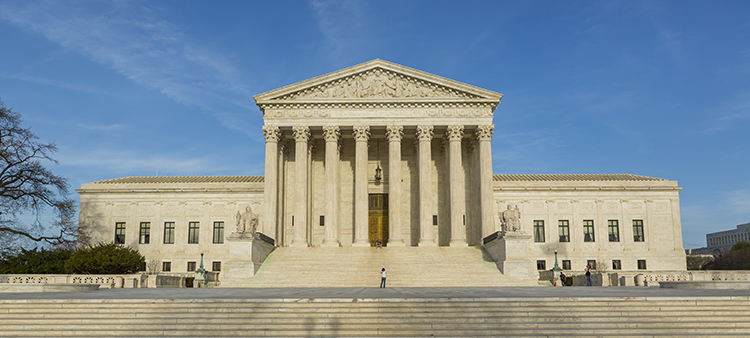The Supreme Court is a liberal body—when it comes to legal writing

Photo by Rob Crandall/Shutterstock.
Jill Barton spent the first decade of her career working as a journalist, with the Associated Press Stylebook always at hand to determine word usage and punctuation choices. But when she became an attorney, she says, she realized that there was no single equivalent style guide when it came to legal writing—and she had to adjust to using the Oxford comma.
As a professor of legal writing at the University of Miami, she also began to notice a contrast between the classic 19th and 20th century court opinions that her students were being given to read and the style of writing coming out of the U.S. Supreme Court in the 21st century. Standards were changing at the highest court of the land, but the wider legal community wasn’t necessarily aware of it. Barton spent five years analyzing more than 10,000 pages from Supreme Court opinions, and The Supreme Guide to Writing is the result.
In this episode of The Modern Law Library podcast, Barton and the ABA Journal’s Lee Rawles discuss her findings and what some of the bigger surprises were. One of her biggest takeaways is that the justices are not a conservative bunch when it comes to writing style.
For example, during most of Justice Antonin Scalia’s tenure on the court, he was a strident opponent of contractions—“can’t,” “don’t,” “shouldn’t” were always “cannot,” “do not,” “should not.” But in his final years, Scalia did sprinkle in a few contractions, and his replacement, Justice Neil Gorsuch, is “the court’s king of contractions,” Barton says.
The justices were willing to depart from grammar rules if adhering to them caused stilted writing, Barton found. Chief Justice John Roberts uses commas based on cadence, rather than simply following strict English grammar guidance. All the justices showed a marked preference for active verbs and shorter, simpler phrases. They have adapted to using pronouns that match litigants’ gender identities and to using the singular “they,” rather than “he or she.”
The Supreme Guide to Writing notes when the court shows unanimity in a usage rule and when there is disagreement. While each justice shows internal consistency with how they show a possessive when a singular noun ends in “s,” there is no group consensus on using an apostrophe “s” versus using a single apostrophe. Barton discusses her research process, offers more insight into the way that legal language is evolving, and shares how practitioners can use her book to modernize their writing.
Think you already have a handle on the new style? Test yourself with Barton’s quiz. The Modern Law Library’s host got a correct score of 8 out of 10.
In This Podcast:

Jill Barton
Jill Barton is the author of three books on legal writing, including The Supreme Guide to Writing. A former journalist and an appellate judicial clerk, she currently works as a professor and director of legal writing at the University of Miami School of Law.




